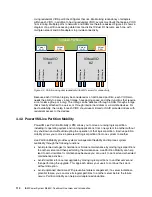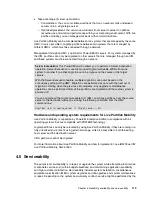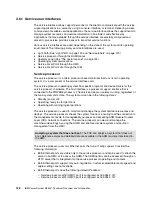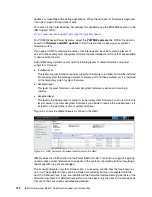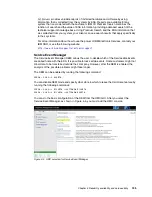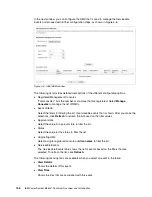
126
IBM Power System E850C: Technical Overview and Introduction
4.6.1 Service user interfaces
The service interface allows support personnel or the client to communicate with the service
support applications in a server by using a console, interface, or terminal. Delivering a clear,
concise view of available service applications, the service interface allows the support team to
manage system resources and service information in an efficient and effective way.
Applications that are available through the service interface are carefully configured and
placed to give service providers access to important service functions.
Various service interfaces are used, depending on the state of the system and its operating
environment. The following primary service interfaces are used:
Light Path (See “Light Path” on page 123 and “Service labels” on page 123)
Service processor through the ASMI menus
Operator panel (See “The operator panel” on page 124)
Operating system service menu
Service Focal Point through the HMC
Service Focal Point Lite through the IVM
Service processor
The service processor is a micro processor-based controller that runs its own operating
system. It is a component of the service interface card.
The service processor operating system has specific programs and device drivers for the
service processor hardware. The host interface is a processor support interface that is
connected to the POWER8 processor. The service processor is always running, regardless of
the main system unit’s state. The system unit can be in the following states:
Standby (power off)
Operating, ready to start partitions
Operating with running logical partitions
The service processor is used to monitor and manage the system hardware resources and
devices. The service processor checks the system for errors, ensuring that the connection to
the management console for manageability purposes and accepting ASMI Secure Sockets
Layer (SSL) network connections. The service processor can view and manage the
machine-wide settings by using the ASMI, and enables complete system and partition
management from the HMC.
The service processor uses two Ethernet ports that run at 1 Gbps speed. Consider the
following information:
Both Ethernet ports are visible only to the service processor and can be used to attach the
server to an HMC or to access the ASMI. The ASMI options can be accessed through an
HTTP server that is integrated into the service processor operating environment.
Both Ethernet ports support only auto-negotiation. Customer-selectable media speed and
duplex settings are not available.
Both Ethernet ports have the following default IP address:
– Service processor eth0 (HMC1 port) is configured as 169.254.2.147.
– Service processor eth1 (HMC2 port) is configured as 169.254.3.147.
Analyzing a system that does not boot: The FSP can analyze a system that does not
boot. Reference codes and detailed data are available in the ASMI and are transferred to
the HMC.
Summary of Contents for E850C
Page 2: ......
Page 36: ...22 IBM Power System E850C Technical Overview and Introduction...
Page 114: ...100 IBM Power System E850C Technical Overview and Introduction...
Page 154: ...140 IBM Power System E850C Technical Overview and Introduction...
Page 158: ...144 IBM Power System E850C Technical Overview and Introduction...
Page 159: ......
Page 160: ...ibm com redbooks Printed in U S A Back cover ISBN 0738455687 REDP 5412 00...



